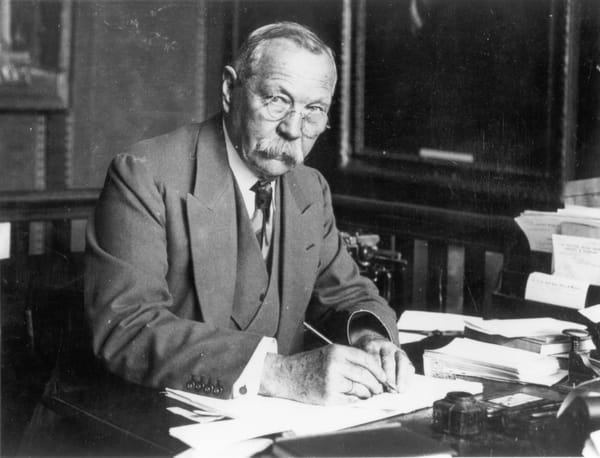Note 5: Bubbles
Space travels and thoughts on religion and meaning.
I’m planning to go a bit light on the judicial politics this week to talk about bubbles.
Getting back to this newsletter’s namesake, my Elite: Dangerous pilot, CMDR Adenadar, recently returned to the human Bubble on the Orion arm of the Milky Way galaxy in the year 3306.
In Elite, The Bubble represents the portion of the galaxy where the majority of mankind lives 1,300 years in the future. Humans have developed robust space technology and faster-than-light travel, but space is big, so while mankind has explored all areas of the galaxy, less than 1% of its member stars have been seen by human eyes. The great thing about Elite is that it takes this scale seriously, and my trip back to The Bubble, still took me several weeks (in real-time), 43 light year hops at a time.
The trip back started at Sagittarius A*, the supermassive black hole at the center of the galaxy:
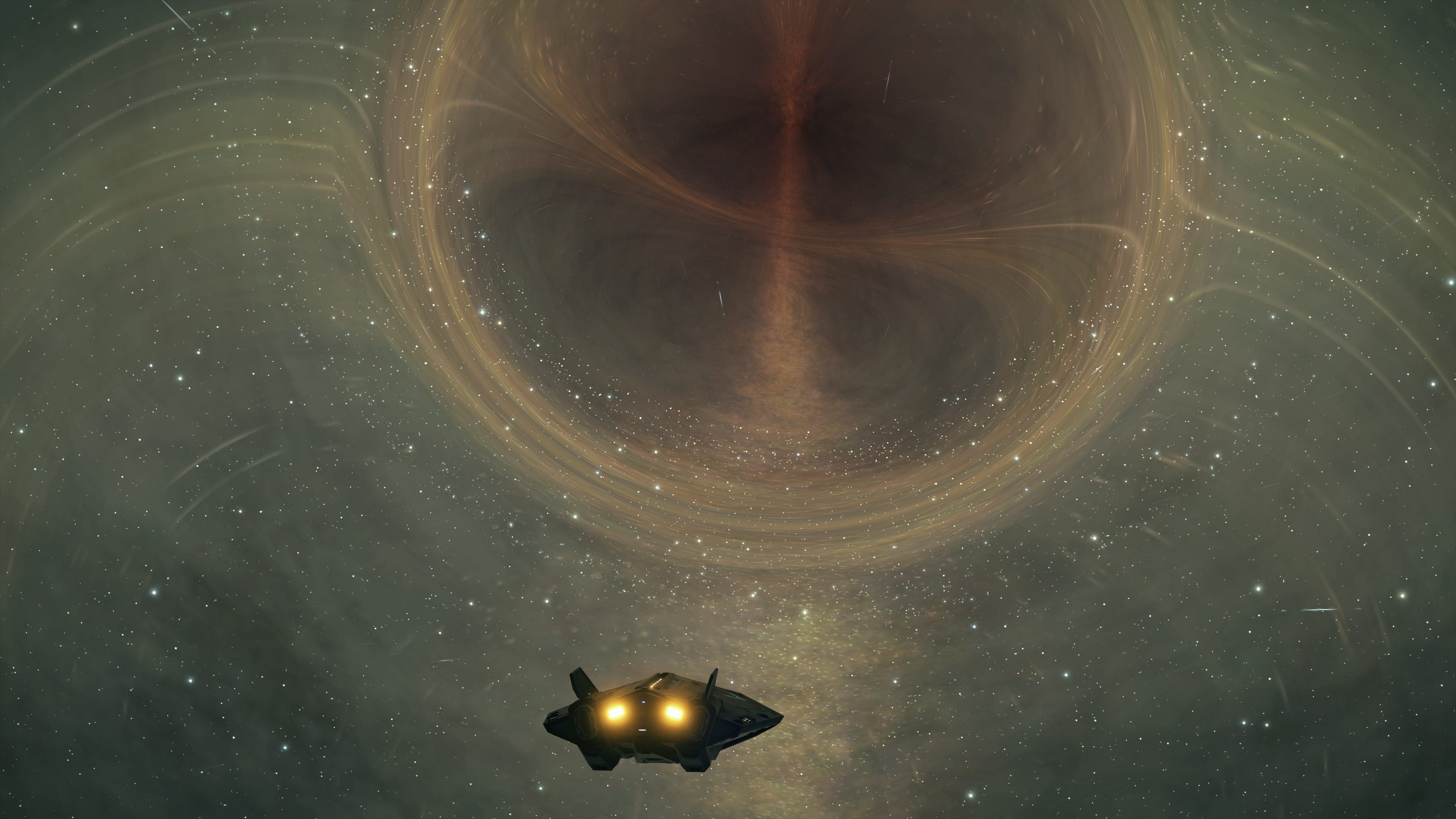
While Elite gets a lot of things correct, it still hasn’t nailed black hole accretion disks, so using the film Interstellar as a reference, Sag A* looks a lot more like a wormhole than a cosmic vacuum feeding voraciously:
While Elite’s Sag A* nails the gravitational lensing, it skips the time dilation one would experience (for obvious game-play reasons) as well as the glowing accretion disk:
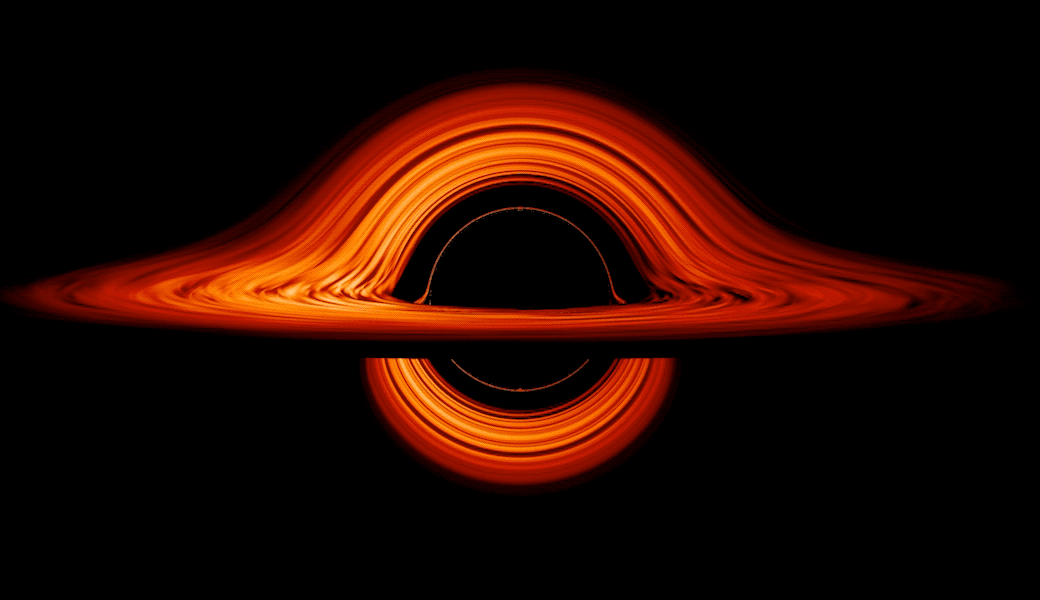
Note that not all black holes have accretion disks (which makes them pretty sneaky cosmic objects if you’re not actively looking for space-time warps), so most of the smaller singularities encountered in Elite are fairly accurate.
And while we’re on the topic of how black holes appear, we have some updates on the only one we’ve managed to capture on camera (with some clever math):
A statistical modeling technique, plus some educated guessing, allowed the researchers to chart changes to the system over time, in a process that included observations gathered by EHT until 2019.
As the models showed, the overall shape of this thing has remained constant over the past 10 years, which is good news if you’re a fan of Albert Einstein. The fixed diameter of the crescent shadow for a black hole of this size agrees with a prediction drawn from his famous theory of general relativity.
“In this study, we show that the general morphology, or presence of an asymmetric ring, most likely persists on timescales of several years,” said Kazu Akiyama, an MIT scientist and study co-author, in the Harvard & Smithsonian press release. “This is an important confirmation of theoretical expectations as the consistency [of multiple observations] gives us more confidence than ever about the nature of M87* and the origin of the shadow.”
This constancy aside, the astronomers did notice a major difference, as the asymmetric ring appears to be wobbling to a significant degree. The ring’s shape hasn’t changed in the past decade, but it has rotated.
“Actually, we see quite a lot of variation there,” said Wielgus.
Very interesting stuff for space nerds like me.
Getting back to my journey from the center of the galaxy back to civilization, here’s a postcard of BOOMKIN III parked on a nearby fleet carrier orbiting Sag A*.
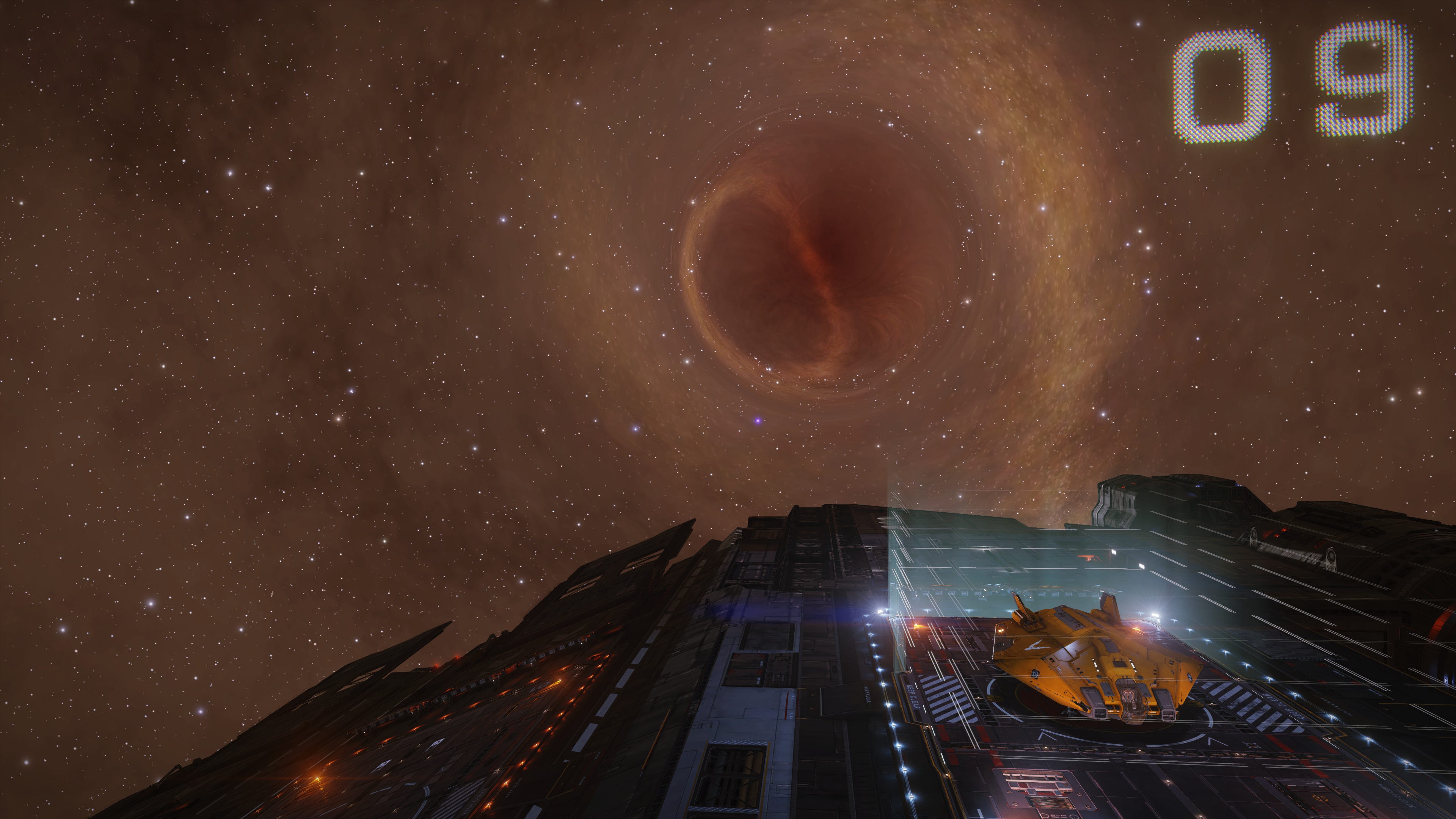
On my way back, I discovered this unique system. I’m not sure whether to dedicate it to The Mandarin or Beyoncé:
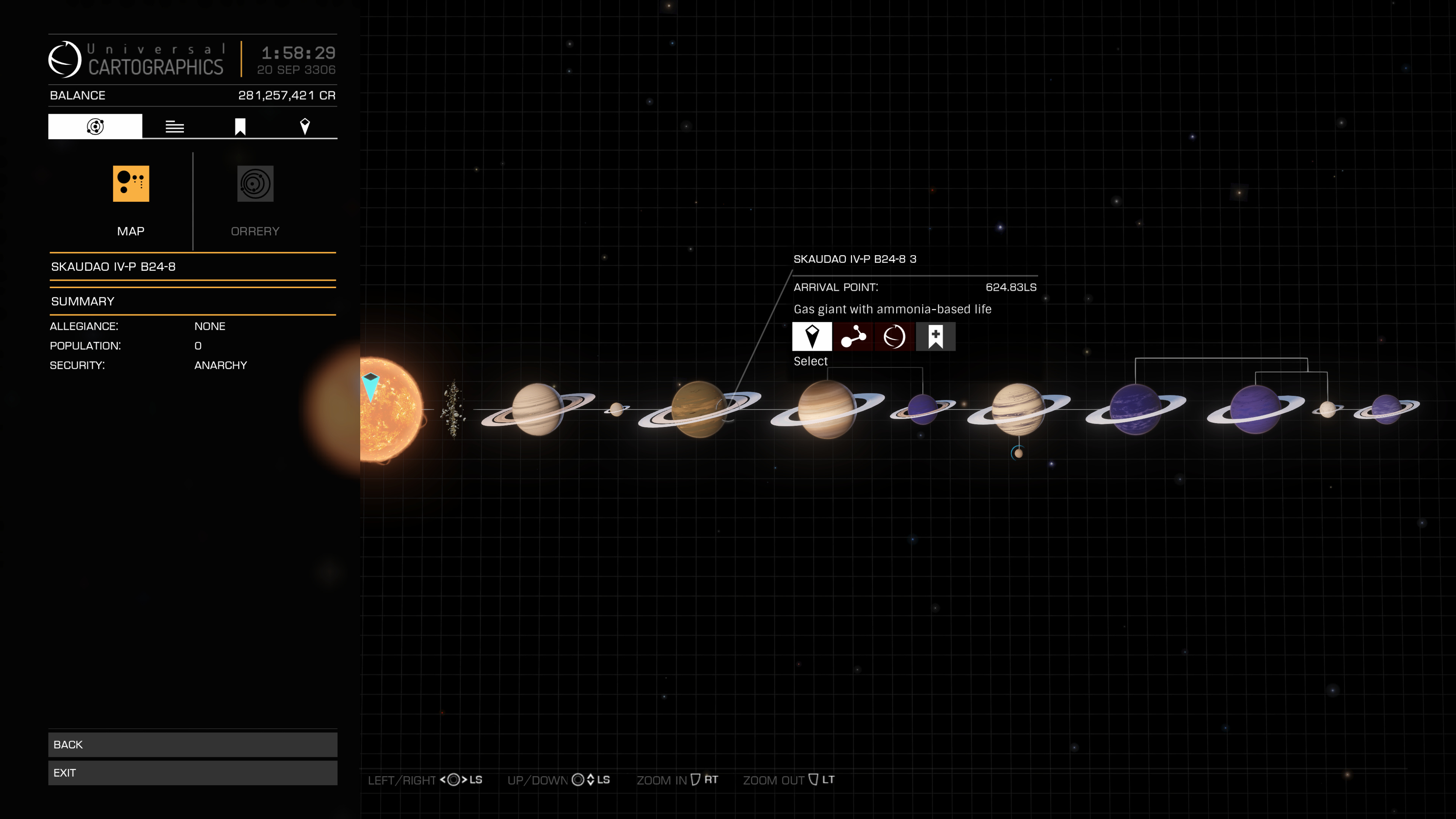
One of my “landmarks” midway through the journey was a feature that I named the Skull Nebula:
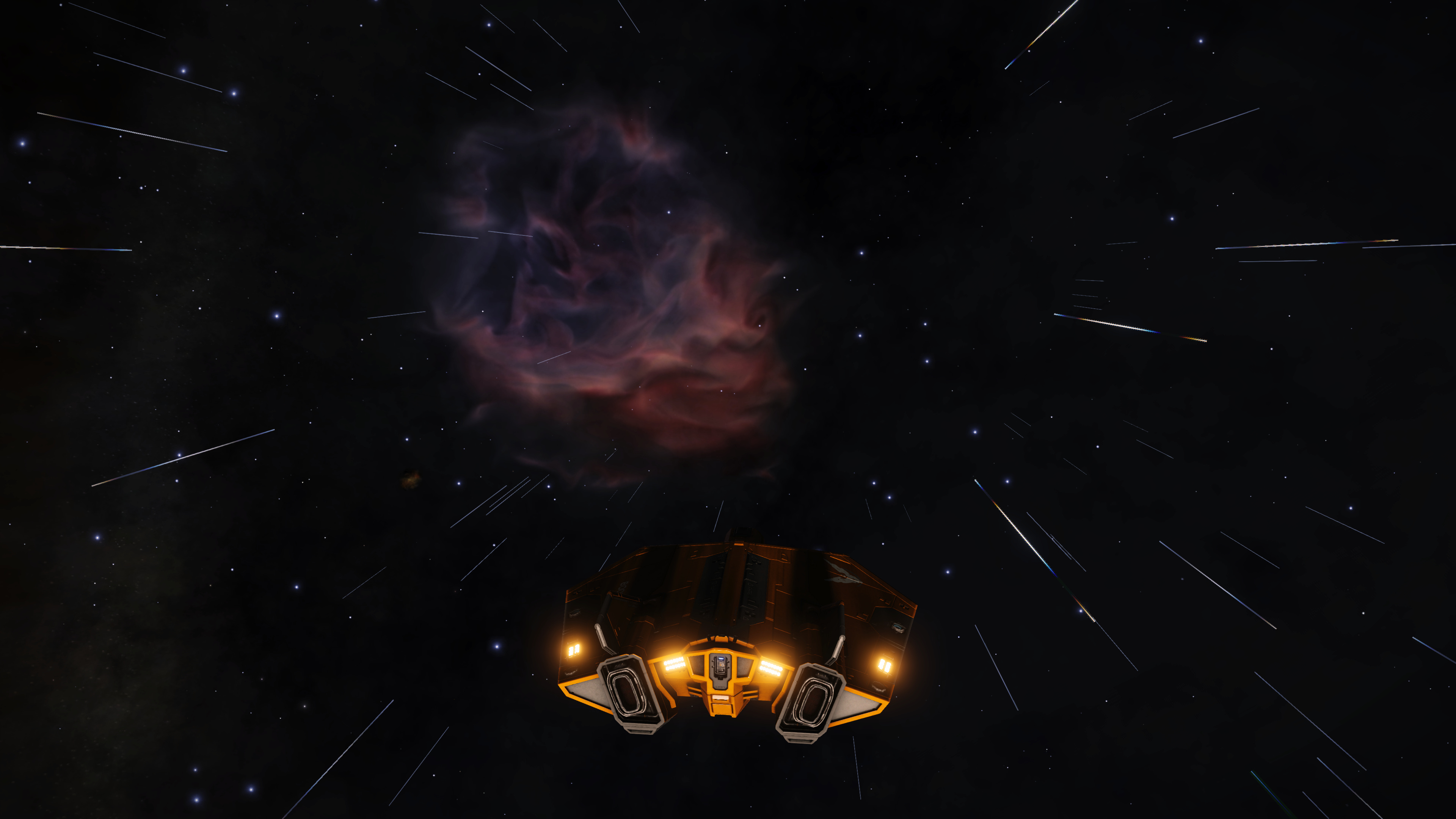
I landed on several planetary bodies on the way in, and I really liked this one:
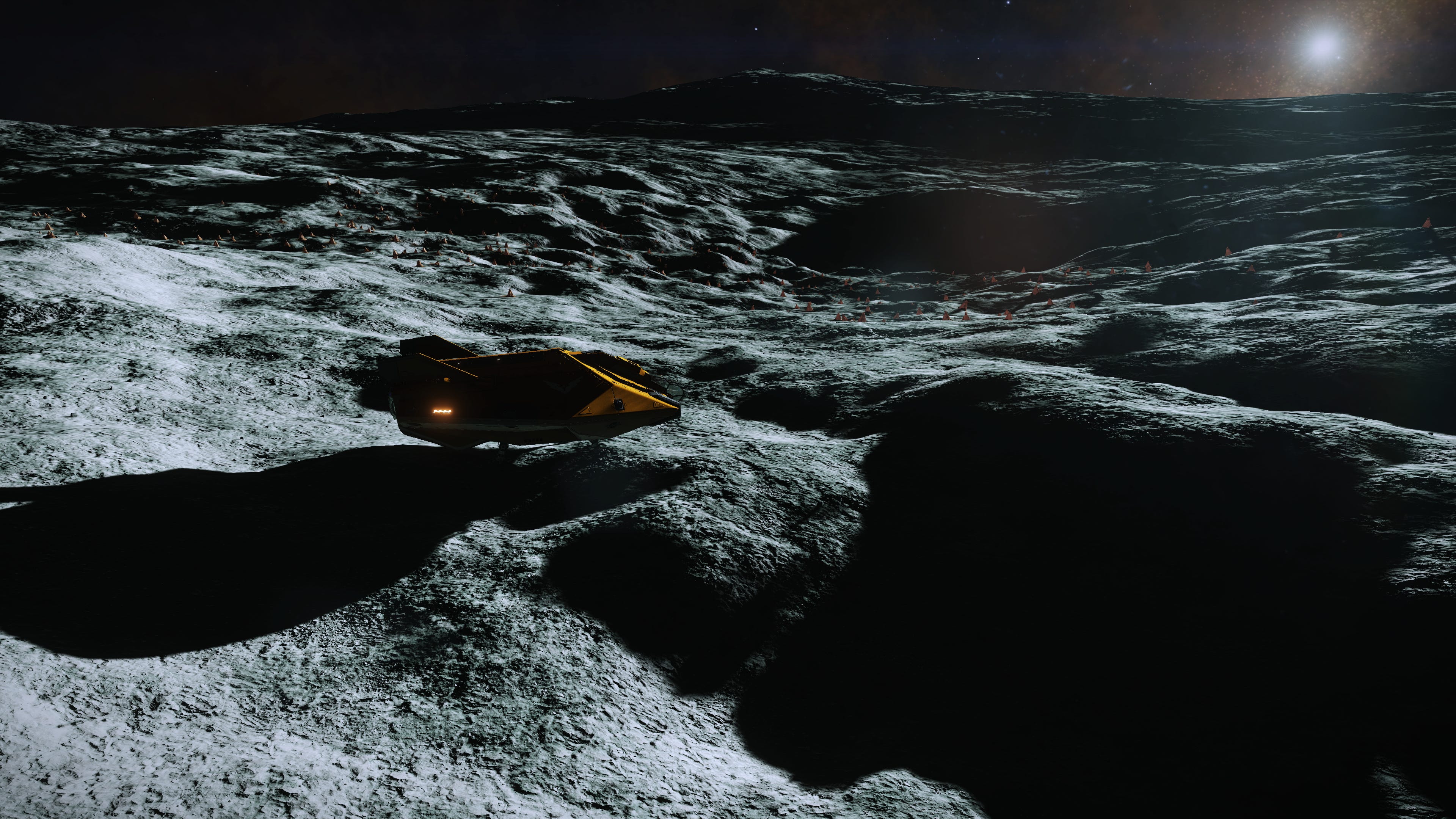
To speed the journey along, I taught myself how to use neutron stars to quadruple my 40+ light year jump range to four times that by supercharging my Frame Shift Drive in the neutron stars’ cones:
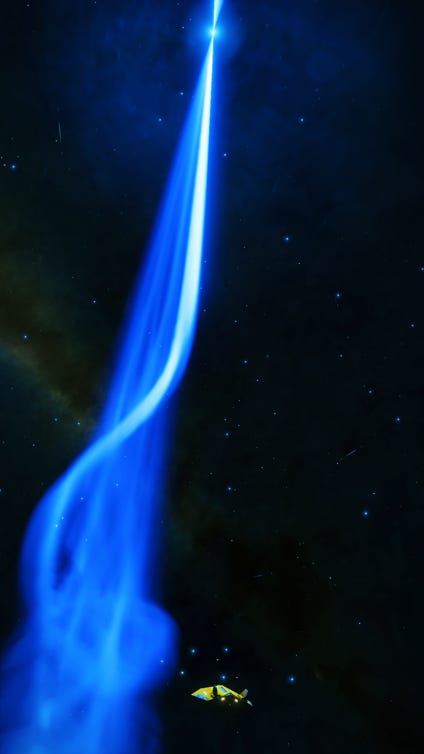
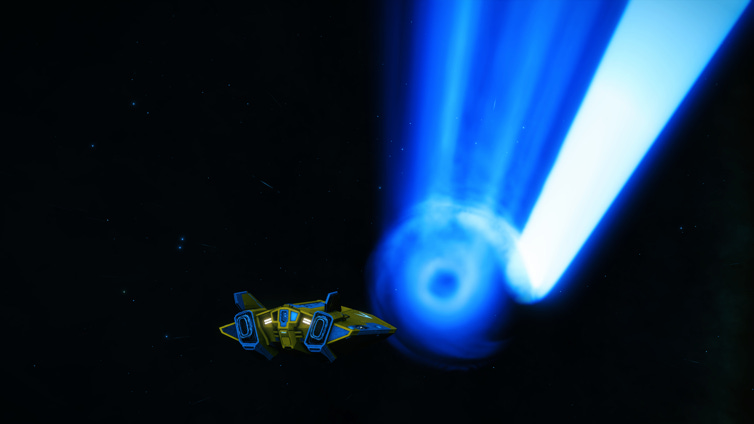
I finally made it back on Saturday, where I started selling all my exploration data to strategic parties that will admit me into locked-off systems:
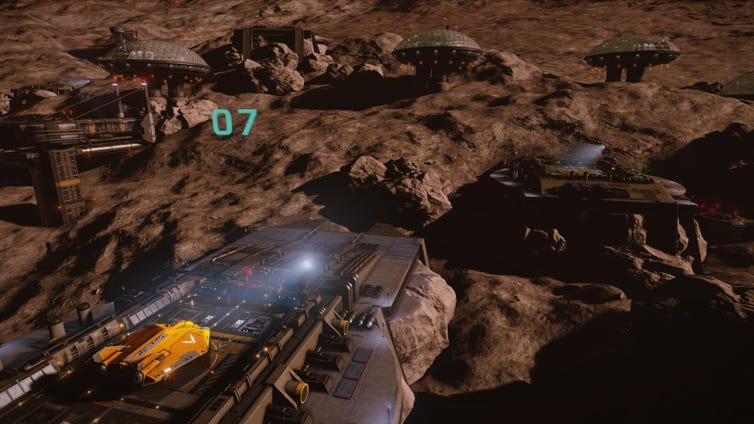
Getting back allowed me to also bump my exploration rank to Elite, as well.
The plan for now is to do some local exploration, including visiting the generation ships left over from an earlier era of human exploration, and to build my next vessel that will take me to the other side of the galaxy, BOOMKIN V:

With some investment and engineering, I should be able to get it to the 80 light year jump range (320 light years w/ neutron star assistance).
Finding meaning in The Bubble
My SCOTUS predictions continue to line-up, with Trump nominating Amy Coney Barrett on Saturday to replace Ginsburg. I fully expect this to be rammed through before the election ends in early November. While I’m still reading up on our next Associate Justice - she seems to be an Originalist in the mold of Scalia (which is neither my most favorite mode of interpretation, nor my least favorite) - I’ve had quite a few flashbacks when it comes to discussions about her faith as a Charismatic Catholic belonging to a group called The People of Praise.
Now, while I don’t have a lot of experience with her group or Charismatic Catholicism, I spent plenty of time as a child and pre-teen in the pews of Assembly of God churches, which was a pretty charismatic Protestant denomination. The best way that I can describe the Assembly of God is to compare it to the Southern Baptist churches I attended later in my older teen years. The Southern Baptist services were meticulously planned affairs. When you picked up your church program for the service, the Baptists had things planned down to the minute. Hymn would take a certain amount of time, offerings would only take a couple of minutes, you’d have your prayer call, and then on to the sermon. If you had a lunch appointment after the service, there was no worry that you would run late.
In contrast, Assembly of God services were much less deliberate and much more emotional. It was not uncommon for the people in church to get caught up on the second or third hymn, and the pastor would roll with it. There were services that never ended up getting to the sermon, and you would be wise to add an hour or two time-buffer to appointments shortly after. Where the Baptists were keen on demonstrating how well they knew how to church, the AG folks were much more interested in personally connecting to the holy power right here and right now, and letting that wash over them. And I did witness plenty of glossolalia (speaking in tongues). Never had any clue what was being said, but the speakers seemed intent of saying whatever it was.
While I haven’t been a true believer in any of that since my younger teen years, I don’t regret the time that I spent in those churches - there’s still plenty in there worth listening to. (And when your attention is flagging, you can always fall back to the Apocalypse of John and read again about the Four Horsemen, dragons, and the holy smitings yet to come.) I enjoyed the community and friends that I made in those AG churches, so Barrett’s Charismatic Catholic background doesn’t count against her in my book. Just like the rest of the population, I knew folks from those settings who were the salt of the Earth and those who were not. And when it came to my own faith, I abandoned it when I realized that I was basically broadcasting into the void, never receiving any signals back in return.
To bring this back to the titular topic of bubbles, I never had any problem finding additional sources of metaphysical awe and motivation after leaving the Christian faith. All I had to do was look up into the sky, and marvel at humans’ insignificance. (This may also be why I took to Lovecraft’s mode of storytelling so readily - it resonated with what I had already been thinking.) Now, some people (such as Lovecraft) take human insignificance and imagine that as a source of terror - we’re only here because something more significant (Mother Nature, Cthulhu, etc.) hasn’t snuffed us out yet. It doesn’t work that way for me - I acknowledge the insignificance as additional headroom that we have to grow.
In my master’s thesis on context-aware computing, I discussed passive sensing and automation as tools that effectively enlarged a person’s sphere of awareness and their sphere of influence. If I can offload data collection to some automation, I don’t have to be looking everywhere all the time to know what’s happening. And if I can craft a mechanism that takes action on my behalf, I can project influence without the need for being there personally. As human beings with technology, we have been doing this for millennia, so none of this is particularly novel. However, in the mismatch between the two “bubbles”, that’s where I topics of interest. As a species, our bubble of perception now extends beyond the bounds of our galaxy - we capture images of black holes in other galaxies (see above) and discover planets across the void of the universe. My personal Rapture isn’t about being suddenly elevated by a third party to be made able to reach out and touch those things - it’s the long process we’ll have to take over many generations to get to that point, with some faith that we have it within ourselves to become not just observers on that cosmic scale, but beings with agency at that scale as well.
One of the best bits of popular culture that captures this sentiment was this scene in Star Trek: The Next Generation:
The Trek writers didn’t get into much more of the mechanics of the Dyson Sphere, opting to take the narrative in a more character-centric direction (featuring one fan-favorite TOS character). However, invoking a Dyson Sphere naturally leads to the Kardeshev Scale, a measure of civilizational development based on how well it captures and utilizes available energy:
- A Type I civilization, also called a planetary civilization—can use and store all of the energy available on its planet.
- A Type II civilization, also called a stellar civilization—can use and control energy at the scale of its planetary system.
- A Type III civilization, also called a galactic civilization—can control energy at the scale of its entire host galaxy.
While we have the ability to see light years into the heart of other galaxies, we have yet to reach the first rung on the Kardeshev ladder.
It’s in our bridging the gulf between the bubbles we can observe (planets in distant galaxies) and extrapolate (Kardeshev Type III civilizations), and our much smaller bubble of what we can influence where I find all the metaphysical meaning I’ve ever needed. For the folks that make the argument that individuals are somehow incomplete without God (or suitable religious substitute), my reply is that they’re probably not thinking big enough themselves.
The Debate
This was my favorite clip from the first presidential debate of 2020:
(Watch until the end when the moderator finally restores order.)
In all seriousness, the debate was indeed a shitshow, but the election ended for me yesterday when I dropped off my mail-in ballot. Given Illinois’ status as a solid Blue state, my votes were less about Trump v. Biden and more about getting rid of Cook County’s Kim Foxx. I did vote to allow Illinois to amend its Constitution to permit a progressive income tax and voted against the assault weapons question for being poorly worded.
Local updates
Speaking of bubbles, our local neighborhood baseball team took its first step toward spending time in the 2020 MLB playoff bubbles on their way to another World Series. While I’m rooting for the Cubs to go all the way, I think that the real story here is that of first-year manager David Ross taking his team to a division championship. When folks were throwing around Ross’s name for manager of the Cubs, I thought it was more wishful thinking on the part of fans than a serious consideration. I’m extremely pleased that I’ve been wrong since that time. Let’s see if he can take the Cubs to another World Series win. He would join a distinguished club.
Interesting Reads
What We Can Learn From Maine’s Move to Ranked-Choice Voting (The Dispatch)
Here’s what happened when neural networks took on the Game of Life (The Next Web)
New expansion for Elite Dangerous will add tens of thousands of locations to the game (Polygon)
Until next week, CMDRs! o7



